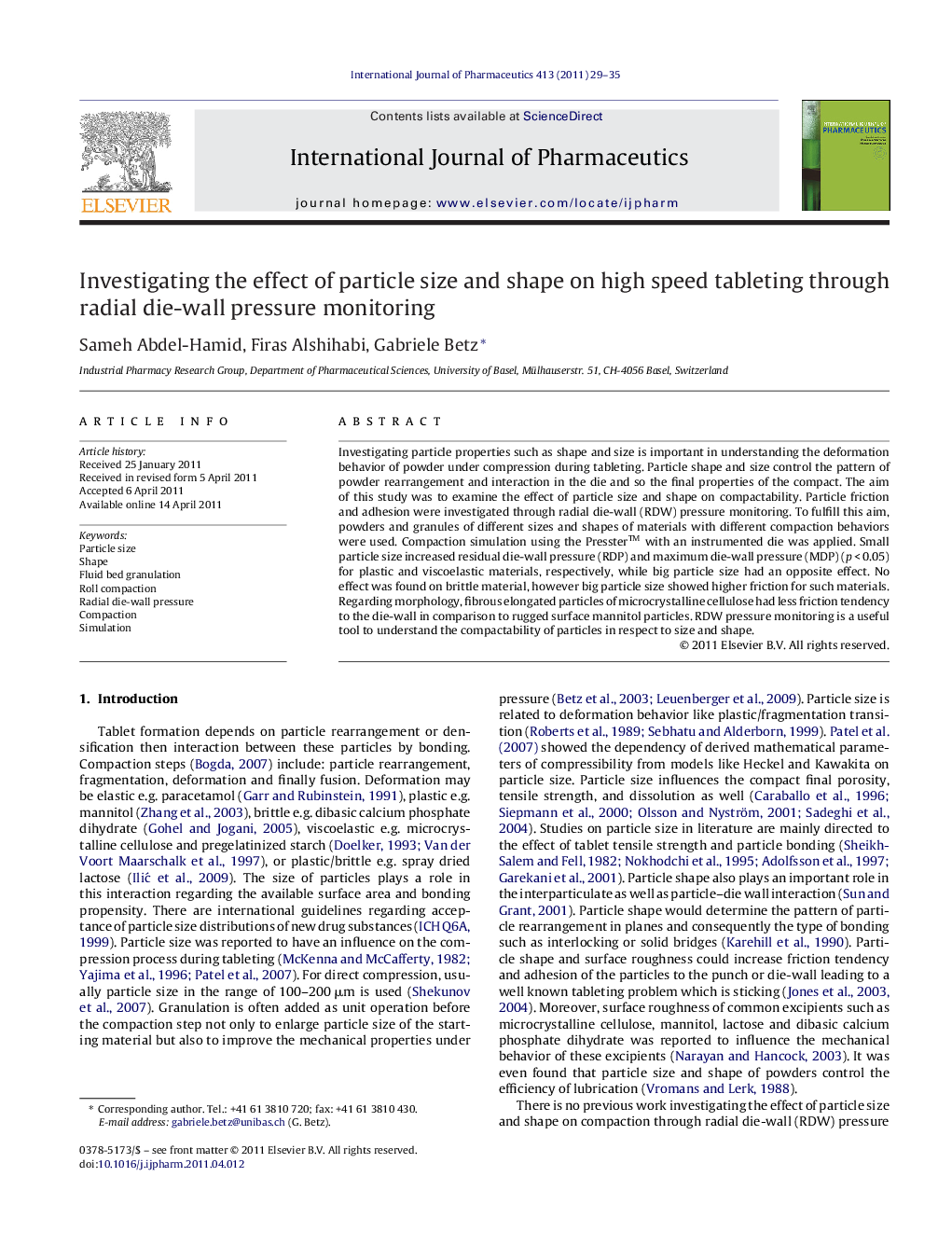| Article ID | Journal | Published Year | Pages | File Type |
|---|---|---|---|---|
| 2503213 | International Journal of Pharmaceutics | 2011 | 7 Pages |
Investigating particle properties such as shape and size is important in understanding the deformation behavior of powder under compression during tableting. Particle shape and size control the pattern of powder rearrangement and interaction in the die and so the final properties of the compact. The aim of this study was to examine the effect of particle size and shape on compactability. Particle friction and adhesion were investigated through radial die-wall (RDW) pressure monitoring. To fulfill this aim, powders and granules of different sizes and shapes of materials with different compaction behaviors were used. Compaction simulation using the Presster™ with an instrumented die was applied. Small particle size increased residual die-wall pressure (RDP) and maximum die-wall pressure (MDP) (p < 0.05) for plastic and viscoelastic materials, respectively, while big particle size had an opposite effect. No effect was found on brittle material, however big particle size showed higher friction for such materials. Regarding morphology, fibrous elongated particles of microcrystalline cellulose had less friction tendency to the die-wall in comparison to rugged surface mannitol particles. RDW pressure monitoring is a useful tool to understand the compactability of particles in respect to size and shape.
Graphical abstractFigure optionsDownload full-size imageDownload as PowerPoint slide
